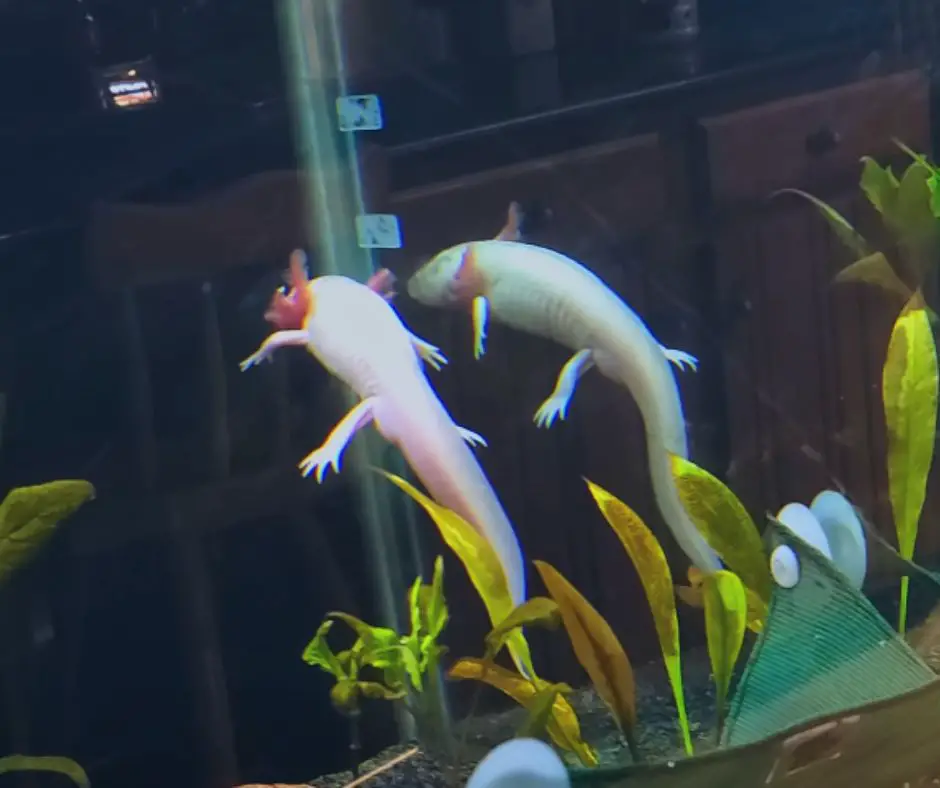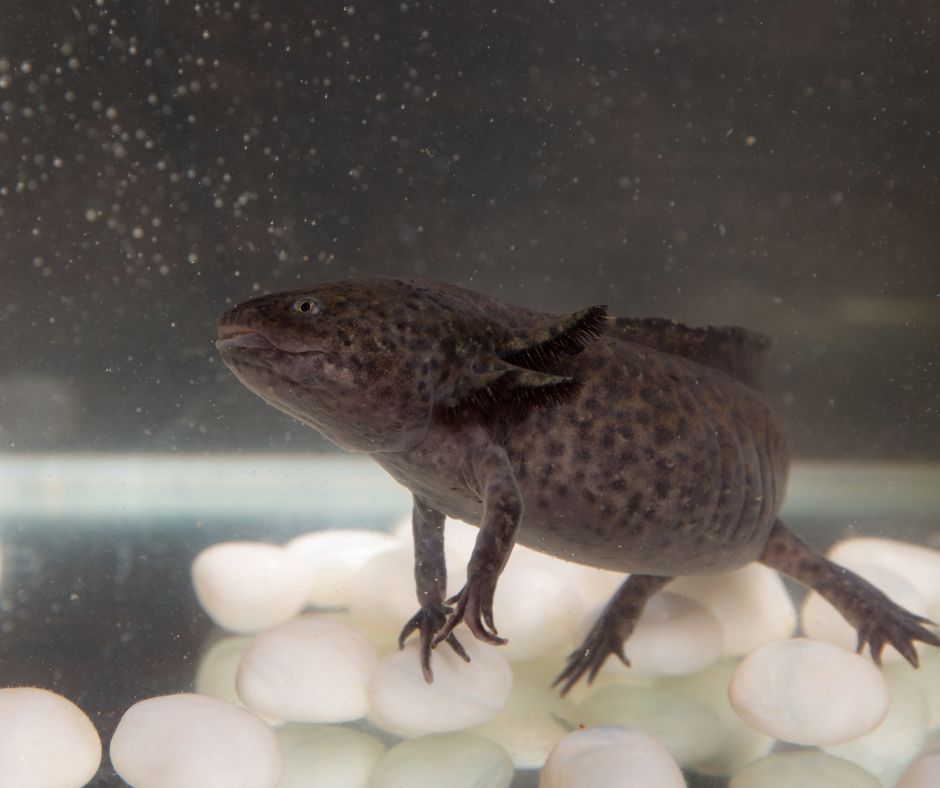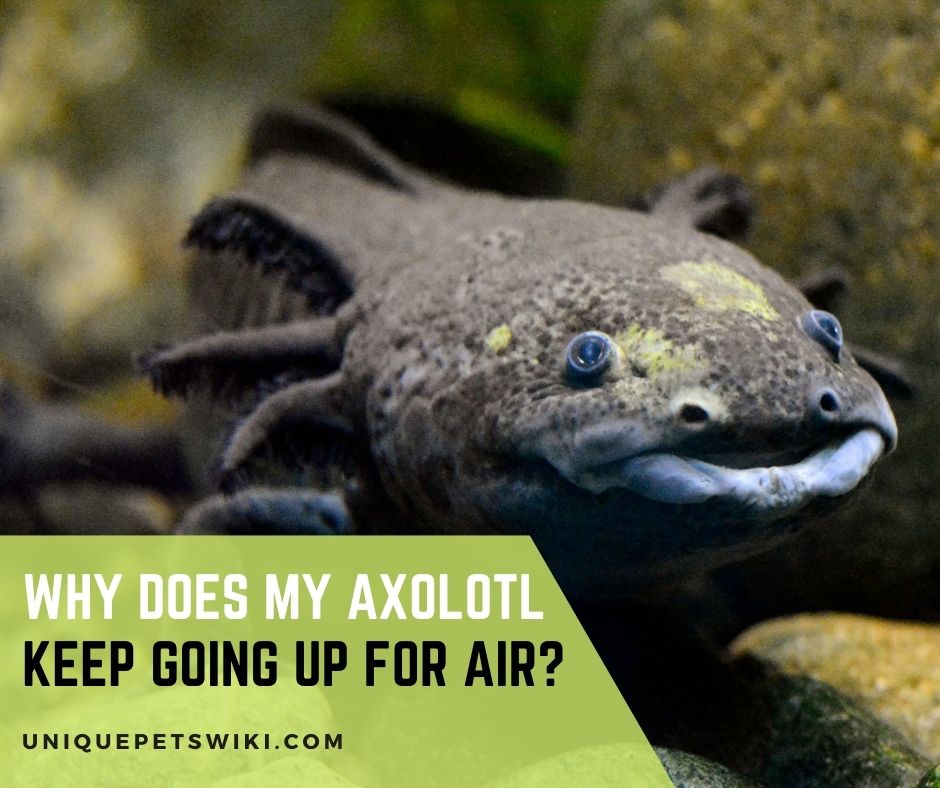In the care of axolotls, one hot topic of concern is the common behavior these salamanders display by going up their tanks for air.
Not many new owners can tell if this is a harmless action, or a sign of distress in their pet.
This article explores the basic information surrounding this phenomenon, including whether or not you need to be worried by it.
Contents
Axolotl Keep Going Up For Air
It is perfectly normal for axolotls to swim up to the surface for air, and this happens every 20 to 30 minutes. Alongside this, the salamander’s respiration involves opening and closing its mouth a couple of times per minute.
If you notice your pet rising to the surface a lot more frequently than this, it could be an indication of a problem of oxygen circulation in the tank.
Why Does My Axolotl Keep Going Up For Air?

As has already been mentioned, when an axolotl goes up for air several times an hour, it may be reacting to insufficient oxygen levels in the water.
The pet therefore rises closer to the surface of the water where there is more oxygen penetration.
Going up for air many times throughout the day could also be a sign that the gills of the axolotl are shrinking thereby compromising its ability to breathe in sufficient oxygen.
To stay alive, it swims to the surface of the water where it perceives more oxygen availability.
Also read: Do Axolotls Need Air?
Lack of Oxygen In the Water
Insufficient oxygen stemming from high ammonia content in the water may also lead to this phenomenon in your pet.
This often results from using an aquarium that is not cycled, or one whose cycle process has crashed.
When the ammonia concentration rises higher than 0 ppm, the oxygen content in the water reduces, and gills of the salamander pet will be compromised.
Their natural instincts kick in, and they rise to the top of the tank to inhale cleaner oxygen.
This situation requires a speedy cycling of the water and treatment of the axolotl to prevent an ammonia burn.
The longer it stays in the toxic water, the higher the chances that exposure to ammonia may result in burns or worse.
Also read: Full Requirements & Water Conditions for Axolotl in Captivity
Tetra Whisper Easy to Use Air Pump for Aquariums (Non-UL)
- POWERFUL: Tetra Whisper Air Pump provides dependable airflow to your aquarium.
- QUIET: Patented dome shape, suspended motor and sound-dampening chambers for quiet operation.
- PROVIDES OXYGEN AND WATER MOVEMENT: Keeps underwater pets happy.
- AVAILABLE SIZES: Select the proper size for your tank – 10, 20 and 40-gallon pumps have single air outlets, 60 and 100-gallon pumps feature dual outlets.
- NON-UL LISTED: Reliable performance at an economical cost.
Last update on 2022-12-29 / Affiliate links / Images from Amazon Product Advertising API
Stress
Physically, a stressed axolotl will present with curled gills and the tips of their tails may also appear to be twisted.
This compromises their ability to gulp in sufficient air, and they will therefore rise to the top of the tank where they perceive more oxygen saturation.
They may also show restless behavior and fail to feed as is the norm. It is important to find out the potential stressors and work towards alienating them.
Stress may result from unhealthy water chemistry, strong current in the tank, poor oxygen saturation in the water, very bright lights within the vicinity of the aquarium, and constipation.
It is also known that presence of bigger, more aggressive fishes or salamanders in the same tank may result in stress. Hence, it may be a good idea to keep your salamanders in their own aquarium.
Check out: 10 Axolotl Stress Signs

Risks When Axolotl Keep Going Up For Air
Going up for air frequently sometimes indicates a problem with the water quality. For example, presence of ammonia in the water is a sure symptom of reduced oxygen levels in the tank.
Apart from damage to the gills, increased levels of ammonia in the tank may damage the pet’s gills, constrain respiration and result in neurological damage.
This may even cost it its life if appropriate measures are not taken in good time.
What Should You Do If Axolotl Keep Going up for Air Regularly
You need to urgently check your water filter to be sure that it is functioning correctly. The filter is important in keeping the water both well-balanced in terms of pH, and also clean.
An ideal filter also breaks the stillness of the water surface and makes little bubbles which are important for axolotl respiration.
At best water filter for axolotl, there are a couple of guidelines that could come in handy when selecting an appropriate water filtration system for your tank.
Moreover, while in most instances axolotls may do well without bubblers, some pet owners extol their benefits.
This is especially in situations where a tank does not have live plants. Bubblers are known to help increase the oxygen levels in the water, and this eases the pet’s respiration.
Comprehensive information about the need for bubblers may be found on Do Axolotls Need A Bubbler?
AquaClear 20-Gallon Ammonia Remover, 3-Pack
- Removes and controls harmful ammonia and nitrite
- Ideal for new or heavily populated freshwater aquariums
- Replacement media designed to fit the AquaClear 20 filter
- Only suitable for freshwater aquariums up to 20 gallons
- Includes three AquaClear 20 Ammonia Remover Inserts
Last update on 2022-12-29 / Affiliate links / Images from Amazon Product Advertising API
In Conclusion
An axolotl swimming to the surface of the water is a natural part of their respiration and physical activity.
However, when your pet shows difficulty in going back down and staying there, there might be a serious problem.
Issues like low oxygen levels in the aquarium and reactions to stress factors may both contribute to this behavior.
The challenge may be even more pronounced if it involves potentially fatal conditions like ammonia burn.
Therefore, it is important to quickly investigate the reasons for the behavior and genuinely work towards solving them to prevent dire scenarios.
Also read: Understanding Your Pet: 12 Common Axolotl Behaviors


